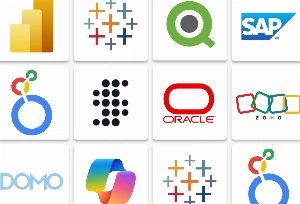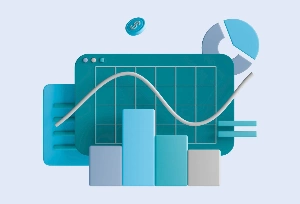Rehost ("Lift and Shift")
This approach involves moving an existing app as-is from an on-premises server to cloud infrastructure, with minimal to no code changes. Rehosting is quicker, simpler, and less expensive as compared to other strategies. However, this approach is suitable if the app’s current version is compatible with the new infrastructure. Otherwise, you should consider some of the next modernization methods.
Refactor
This approach to application modernization is also known as re-packaging, as it involves codebase changes to achieve improved performance, design, and maintainability. In this case, the functionality and behavior aren’t altered.
Refactoring is chosen when the application code is too messy or hard to maintain – even though adjustments are invisible for end-users, they’re still needed.
Rearchitect
This method involves either re-architecting an application from scratch or making noticeable modifications to its code and functionality to scale better in the cloud. Here, monolithic applications are divided into microservices that can be built, deployed, and managed independently. It also might include replacing proprietary APIs and software dependencies with open-source alternatives. Re-architecting results in reduced TCO, better resilience against outages and performance issues, and improved agility.
Rebuild
This application modernization strategy is more serious and complex – it involves building the app from the ground up with new technological or operational requirements. Sometimes, rebuilding keeps an app’s core functionality but redesigns its structure as a cloud-based solution.
Rebuilding can be executed gradually and is optimal when refactoring or re-architecting are too resource-intensive, yet you want to leverage the advantage of cloud-based services.
Replace
Replacing a legacy solution with a new, ready-made app might save you valuable time and resources in cases when rebuilding or any other modernization endeavors are too long, complex, or completely ineffective. The app might not be supported on the latest OSs or by major cloud providers. But consider that this approach has potential challenges, such as process disruptions or limited future modernization efforts.
Retire
Some legacy applications become too expensive to maintain, vulnerable to security issues, and fail to support existing or future business needs whatsoever. If an app only drains resources and hampers growth, retiring is the right way out. This means gradually withdrawing the legacy solution from use while migrating the critical components to modern environments.
Retain (Encapsulate)
In some cases, keeping an outdated app in its current state is the most practical option – especially if it still performs reliably, delivers sufficient business value, or has limited interaction with other systems. This strategy is typically used when an application relies on another system that must be modernized first, or when the modernization cost and effort outweigh the potential benefits. Organizations can also retain a legacy app if they plan to integrate a SaaS soon.
Though this method doesn’t solve problems related to the app’s inefficiencies, scalability, and costs, it allows teams to prioritize application modernization initiatives and revisit the retained systems once business priorities or technical dependencies change.
How to Choose the Right Modernization Strategy
Modernization isn’t just a technical update – it’s a strategic business move that aims to improve agility, competitiveness, and fuel long-term growth. Hence, choosing the right application modernization strategy is the first and highly important step. Make sure you go through these 3 phases to make a well-informed decision and modernize with minimal disruptions.
Assessment and Evaluation
To make a good plan, you first need to understand where you start. For this, perform an end-to-end assessment of your current application landscape to pinpoint strengths, inefficiencies, duplications, and potential risks.
To ensure a comprehensive evaluation, document and map all system interactions, deeply check legacy code and infrastructure platforms, and test for scalability to minimize further limitations.
Decision Factors: Cost, Complexity, Risk
The choice of modernization strategy must align with your organization's risk tolerance and available resources. Before making the final decision, consider these factors:
- Cost. Assess both the upfront and long-term costs associated with modernization, including development, training, and maintenance expenses.
- Complexity. Evaluate the application architecture, codebase, and integrations to understand the effort required for modernization.
- Risk. Identify potential problems such as data loss, downtime, and security issues that could arise during modernization.
Matching Strategies to Business Goals
A modernization strategy that is right for you must match both your current needs and long-term goals. Whether it’s enhancing operational efficiency and reducing costs, driving innovation and agility, or improving scalability and performance, make sure the selected strategy serves these tasks, and modernization efforts drive meaningful value.
Step-by-Step Guide to Implementing an Application Modernization Strategy
What makes application modernization successful? Careful planning and structured execution. This guide covers all the key steps to transition from legacy systems with minimum risks and maximum profits.







_1764586939-small.webp)

